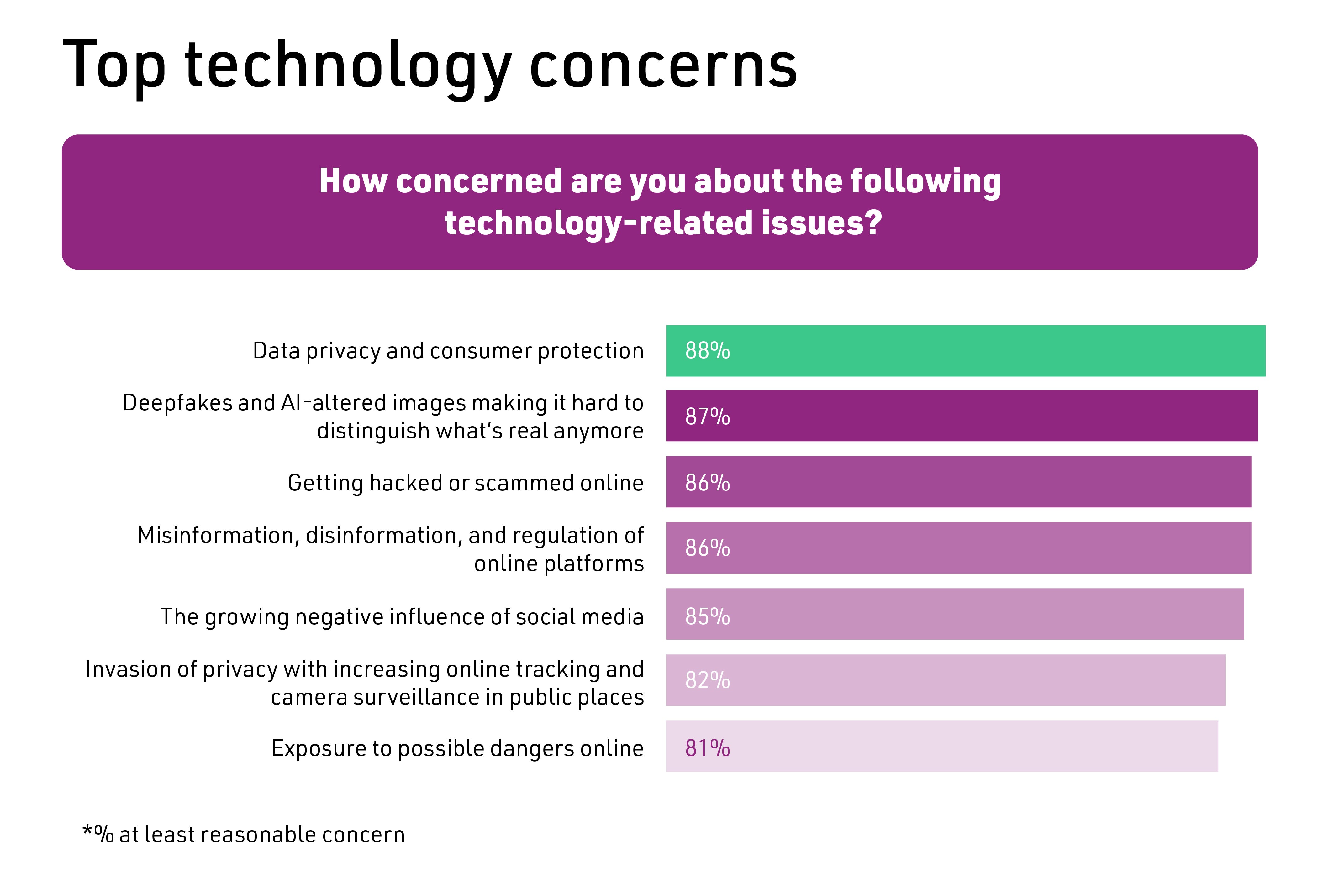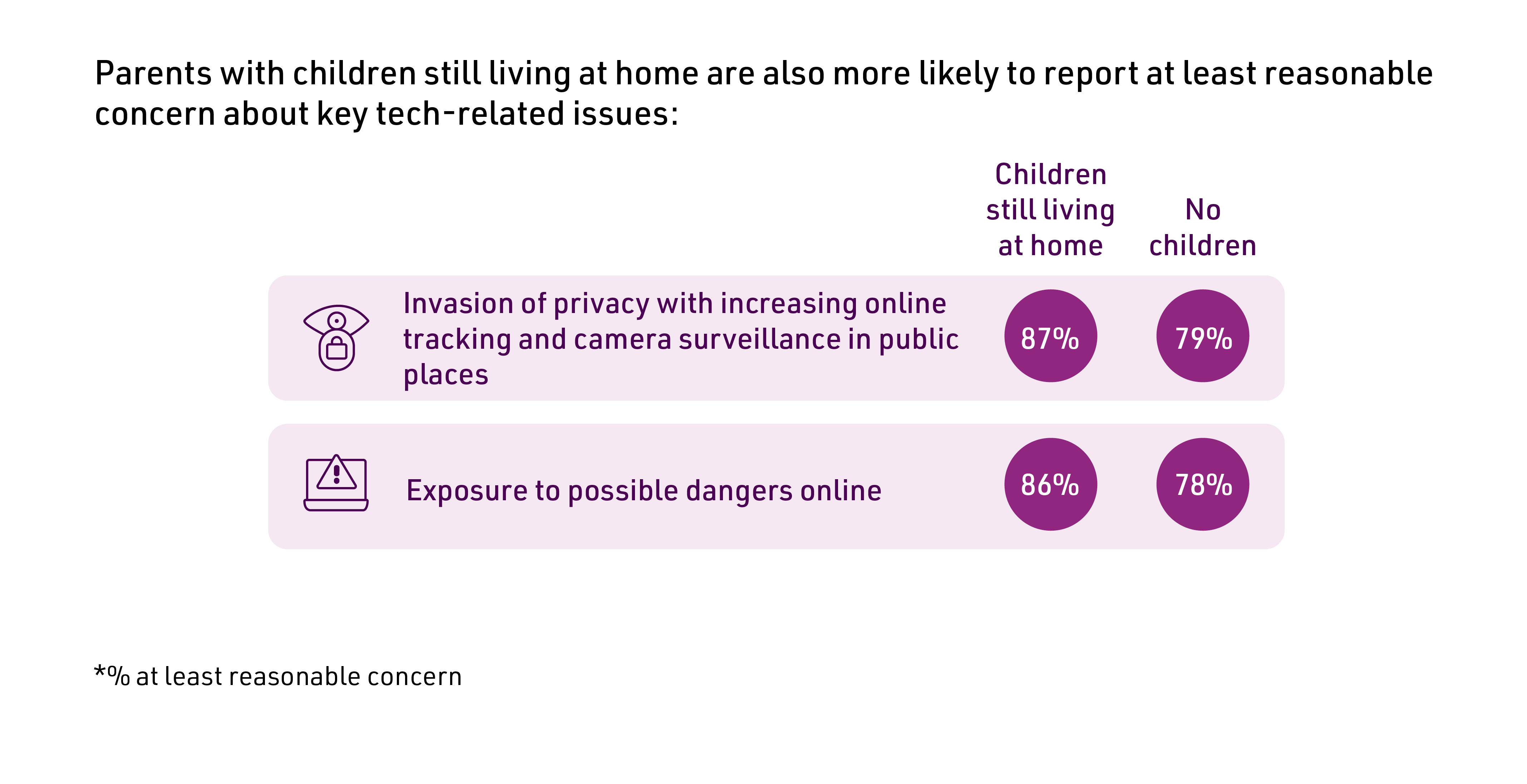Can you tell what’s real in an AI world?

A smiling face that doesn't belong to a real person, a video of a celebrity saying something they never actually said, and a news headline that looks legitimate, but was completely made up by a machine. Welcome to the age of AI, where not everything you see online can be taken at face value.
AI tools like ChatGPT, DALL·E, and Midjourney are changing how content is created and shared. While these advances are exciting, they're also making it harder to separate fact from fiction.
With AI-generated images, videos, and text becoming increasingly realistic and common, it's no surprise that many Australians are feeling uneasy. According to the Real Concerns Report 2025, nearly 9 in 10 Australians are worried about deepfakes and digitally altered content.

So, how do we keep up? In this blog, we'll explore how AI is reshaping what we see and believe, and how we can stay informed and aware in an ever-changing digital landscape.
The blurred line between real and artificial
AI-generated content is becoming more convincing. Every day, it becomes easier for anyone to create hyper-realistic images, videos, and text that look and sound just like the real thing. Whether it's a deepfake video or photos of someone who doesn’t actually exist, Gen AI is blurring the boundaries between what's genuine and what's been digitally made.
The concern for AI extends beyond just visuals, with 86% of Australians reporting that they are worried about misinformation and 88% expressing concern about data privacy and consumer protection.
As these technologies evolve, spotting the fakes is becoming more challenging. That's why building digital literacy is more important than ever. Understanding how AI works, its limitations, and the warning signs to look out for can help us navigate this new digital world with greater confidence.
Impact of social media and AI
On social media, not everything you see is as it seems. AI-generated voices and faces are being used in influencer profiles and product reviews, while AI-written captions can slip into your feed without you ever realising. Throw in AI filters, and it’s easy to confuse artificial with the authentic.
For parents, this creates a growing challenge. While they might have grown up with technology and social media, children are still learning how to interpret what they see. 86% of parents with children at home say they’re at least reasonably concerned about their kids being exposed to misinformation or AI-generated content.

This extends beyond parenting, with 86% of Australians concerned about the negative influence of social media, while 81% worry about exposure to potential online dangers. Whether it's a deepfake, a misleading product review, or an AI-generated post designed to appear like news, it's becoming increasingly difficult for people of all ages to distinguish what's real.
Learning how to think critically about the content we see, question its source, and look beyond first impressions is one of the best ways to stay safe and informed online.
AI’s role in education and digital literacy
AI is already making its way into classrooms, helping teachers personalise lessons, mark assignments more efficiently, and streamline admin tasks. Used correctly, these tools can support learning and free up time for teachers to focus more on their students. But they also raise new questions, especially around fairness, originality and how students are using AI outside of class.
It’s no secret that some students are turning to tools like ChatGPT to help complete homework or assignments. While AI can be useful for brainstorming or research, it shouldn't replace genuine understanding or critical thinking. And while free AI detector tools or AI checkers are becoming more common, they're not perfect, as they can miss things or wrongly flag genuine student work.
That's why education around responsible use is so important. Students need to understand what AI can and can't do, how to use it ethically, and why doing the work themselves still matters. These aren't just school skills, they're life skills that will shape how they think, work and problem-solve in a digital world.
Trust and credibility in the AI era
As generative AI becomes more mainstream, verifying what you see, read or hear online has never been more important. These days, simply trusting your feed isn't enough; you need to double-check. Thankfully, there are a few simple habits that can help build a stronger filter.
Spotting misleading content
Start by cross-checking news stories with reputable sources such as government websites or well-known media outlets. If multiple credible sources report the same story, it's more likely to be accurate. You can also use tools like reverse image search to determine the origin of a photo, which is especially useful for identifying misleading or out-of-context visuals.
Pay attention to the details
When watching videos, pay attention to small details. Deepfakes often reveal themselves through things like unnatural blinking, mismatched lighting, blurring or strange cropping (especially around the mouth, eyes and neck), or awkward gaps in the storyline.
Trust your gut. If something feels off, it probably is. Likewise, don't stop at just the headline of any article. Many headlines are written to grab attention, not always to tell the full story. A quick read-through can often reveal if a post is exaggerated or flat-out false.
Before sharing anything, pause and ask yourself: Does this seem trustworthy? If there's even a hint of a doubt, it's worth fact-checking the information with reputable sources elsewhere.
The call for transparency and ethical AI
At the same time, there's a growing public demand for more transparency. Many people believe AI-generated content, whether it's an image, a video or written text, should be clearly labelled. Creators should be upfront about the tools they use, and platforms should take more responsibility for flagging or moderating misleading content.
There's also increasing conversation around the need for ethical AI. Developers and companies are being called on to create tools that are safe, fair, and transparent. But until stronger regulations catch up, being digitally aware remains one of the most powerful ways to stay informed and protect yourself.
Navigating in a synthetic digital world
Learning how to navigate this new digital landscape doesn't just help us stay safe; it can also help us feel more confident and in charge of the choices we make online. So, where should you begin?
Start with the basics
Understanding how AI works, what it can do and where its limits are can make a big difference. You'll be better equipped to spot when something seems off, whether it's an unusually perfect photo or a suspicious-sounding video.
Make critical thinking part of your scroll
Asking questions can help you make smarter decisions online. Take a moment to consider: Who created this? What's their intention? Can I check the authenticity of this content elsewhere? When something feels too dramatic, polished or simply too good to be true, it's worth digging a little deeper.
Keep learning and stay informed
Following trusted news sources like official news, education, and government websites can help you stay informed about AI developments and online safety. And if you want a little extra protection, browser extensions and web filters like Deepfake Detector can help flag suspicious content before you accidentally share it.
The truth is, we now live in a world where digital and real-life boundaries often blur. But by staying curious, informed and aware, we can protect ourselves and those around us.
Keep Reading: Learn more and understand the impacts of AI on jobs everywhere.
AI has the power to make life easier, from simplifying everyday tasks like summarising documents to supporting big innovations in personalised learning. However, as these tools become more common, it's also becoming harder to discern what is true online. That’s why building strong digital literacy isn’t just useful — it’s essential.
While it can be normal to be cautious of AI, it does holds multiple benefits to improving our lives, including the workforce. Take a look at some ways AI can affect jobs from office roles, to nurses, teachers, and blue-collar workers.
30 Jun 2025

Zoe Ng
Content writer, foodie, crazy cat lady.
With over a decade of experience in Copywriting and Publishing, Zoe has crafted copy and content for brands like AirAsia and leading titles such as Harper’s Bazaar and Women’s Health Malaysia.